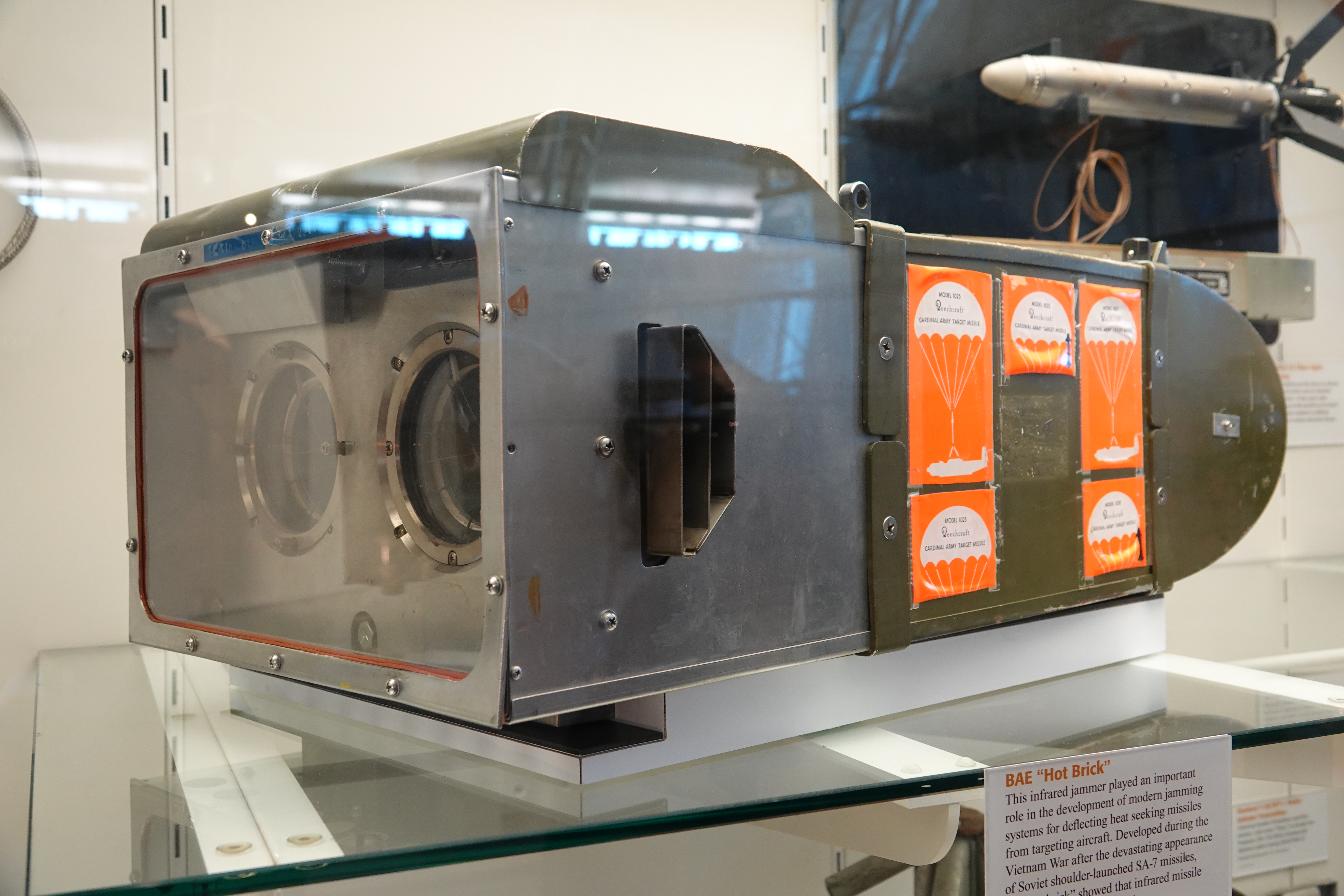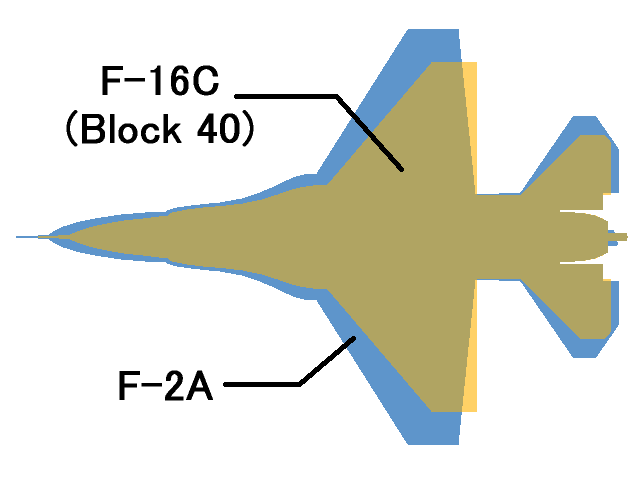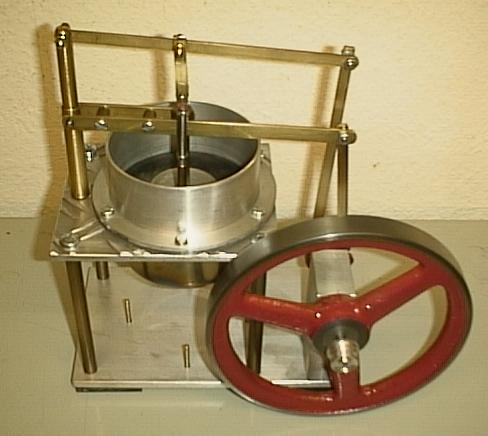|
Mitsubishi AAM-5
The Mitsubishi AAM-5 (Type 04 air-to-air missile, ) is a short-range air-to-air missile developed and produced by Mitsubishi Heavy Industries for the Japan Air Self-Defense Force. Development of the missile as a replacement for the AAM-3 (Type 90) missile commenced in 1991 and it has been operational since 2004. Characteristics Unlike the Type 90 guided missile, the AAM-5 does not have canard control surfaces, using thrust vectoring for high agility. The missile body has narrow strake (aeronautics), strakes extending over most of its length. The NEC manufactured seeker has also been improved. Addition of a triaxial gimbal to the infrared seeker has increased the field of view and an infrared focal plane array multi-element seeker allows infrared imaging. In particular, the addition of an INS means mid-course updates and LOAL (Lock-on after launch) is possible. Terminal homing is via infrared imaging (IIR). In terms of generation, it is placed in the same generation as missiles ... [...More Info...] [...Related Items...] OR: [Wikipedia] [Google] [Baidu] |
Japan Air Self-Defense Force
The , , also informally referred to as the Japanese Air Force, is the air and space branch of the Japan Self-Defense Forces, responsible for the defense of Japanese airspace, other air and space operations, cyberwarfare and electronic warfare. The JASDF carries out combat air patrols around Japan, while also maintaining a network of ground and air early-warning radar systems. The branch also has an aerobatic team known as Blue Impulse and has provided air transport in UN peacekeeping missions. The JASDF had an estimated 49,913 personnel as of 2018, and as of 2020 operates about 740 aircraft, approximately 330 of them being fighter aircraft. As of 2020, the JASDF is under increasing pressure to intercept warplanes from China's People's Liberation Army Air Force (PLAAF) close to entering its air space. As of the last fiscal year ending in March 2020, the JASDF scrambled a record 947 times alone against PLAAF warplanes, putting heavy wear and tear on the F-15J. As of 2021 ... [...More Info...] [...Related Items...] OR: [Wikipedia] [Google] [Baidu] |
Infrared Countermeasure
An infrared countermeasure (IRCM) is a device designed to protect aircraft from infrared homing ("heat seeking") missiles by confusing the missiles' infrared guidance system so that they miss their target ( electronic countermeasure). Heat-seeking missiles were responsible for about 80% of air losses in Operation Desert Storm. The most common method of infrared countermeasure is deploying flares, as the heat produced by the flares creates hundreds of targets for the missile. An infrared sensor that is sensitive to heat, such as emitted from an aircraft engine, is included on missiles launched by man-portable air-defense systems ( MANPADS). Using a steering system, the missile is programmed to home in on the infrared heat signal. Because they are portable, MANPADS missiles have a limited range, burning out a few seconds after launch. Countermeasure systems are usually integrated into the aircraft, such as in the fuselage, wing, or nose of the aircraft, or fixed to an oute ... [...More Info...] [...Related Items...] OR: [Wikipedia] [Google] [Baidu] |
AAM-4 (Japanese Missile)
The Mitsubishi AAM-4 (Type 99 air-to-air missile, ) is a medium-range active radar homing air-to-air missile. It is a modern beyond-visual-range missile developed in Japan and intended to replace the semi-active radar homing AIM-7 Sparrow missile in service. It has been operational since 1999. The main contractor is Mitsubishi Electric. The 2010 AAM-4B was the world's first air-to-air missile with an Active electronically scanned array, AESA radar seeker. The AAM-4 is too large to fit in the internal weapons bay of the F-35 Lightning II. This has led to a program with MBDA UK to adapt the latest AAM-4 seeker technology to MBDA's Meteor (missile), Meteor missile airframe to produce the JNAAM. Development The improved AAM-4B was the world's first air-to-air missile with an Active electronically scanned array, AESA radar seeker. The AAM-4B entered production in 2010 for service on the F-15J and F-2, but it is too large to be carried in the weapons bay of the F-35 Lightning II. On 17 ... [...More Info...] [...Related Items...] OR: [Wikipedia] [Google] [Baidu] |
AAM-2
The Mitsubishi AAM-2 was a Japanese prototype for a limited all aspect infrared homing air-to-air missile developed based on the American AIM-4D Falcon missile. It never reached production. Development In 1968, Japan selected a modified version of the F-4E as the next main future fighter of the Japan Air Self-Defense Force with the possibility to employ the AIM-4D being an important factor of the decision. The development of the XAAM-2 was started in 1970 as an air-to-air missile for the newly acquired F-4EJ. It was developed by the Technical Research and Development Institute and Mitsubishi Heavy Industries, aiming to exceed the performance of the original AIM-4D. The guidance system used infrared homing like the AIM-4D, but improved to a limited all-aspect infrared homing with the ability to attack from the front and side of the enemy aircraft with the reliability of electronic devices also improved. The missile employed a higher performance rocket motor expanding its range. ... [...More Info...] [...Related Items...] OR: [Wikipedia] [Google] [Baidu] |
AAM-1 (Japanese Missile)
The Mitsubishi AAM-1 was a Japanese infrared homing air-to-air missile developed from the AIM-9B Sidewinder missile. Operational history Starting in 1969, the AAM-1 was produced by Mitsubishi Heavy Industries, with around 400 produced in total. It served as the standard armament for Japan Air Self-Defense Force F-104J while used on North American F-86F and Mitsubishi F-1. Being slightly shorter and lighter compared to the AIM-9E Sidewinder, the AAM-1 had inferior performances compared to the American missile which was entering service in Japan. The unit cost of an AIM-9B purchased through Foreign Military Sales was about 1 million yen, while that of AAM-1 was about 3.5 million yen in 1968 and about 4.19 million yen in 1969. Due to higher cost and inferior characteristics, the procurement of the AAM-1 was halted in 1972 with the last examples withdrawn for service in 1986.https://www.forecastinternational.com/samples/F659_CompleteSample.pdf Operators * - Japan Air Self-Defe ... [...More Info...] [...Related Items...] OR: [Wikipedia] [Google] [Baidu] |
Vectoring Nozzles
Thrust vectoring, also known as thrust vector control (TVC), is the ability of an aircraft, rocket, or other vehicle to manipulate the direction of the thrust from its engine(s) or motor(s) to control the attitude or angular velocity of the vehicle. In rocketry and ballistic missiles that fly outside the atmosphere, aerodynamic control surfaces are ineffective, so thrust vectoring is the primary means of attitude control. Exhaust vanes and gimbaled engines were used in the 1930s by Robert Goddard. For aircraft, the method was originally envisaged to provide upward vertical thrust as a means to give aircraft vertical (VTOL) or short (STOL) takeoff and landing ability. Subsequently, it was realized that using vectored thrust in combat situations enabled aircraft to perform various maneuvers not available to conventional-engined planes. To perform turns, aircraft that use no thrust vectoring must rely on aerodynamic control surfaces only, such as ailerons or elevator; aircraft ... [...More Info...] [...Related Items...] OR: [Wikipedia] [Google] [Baidu] |
Leading-edge Extension
A leading-edge extension (LEX) is a small extension to an aircraft wing surface, forward of the leading edge. The primary reason for adding an extension is to improve the airflow at high angles of attack and low airspeeds, to improve handling and delay the stall. A dog tooth can also improve airflow and reduce drag at higher speeds. Leading-edge slat A leading-edge slat is an aerodynamic surface running spanwise just ahead of the wing leading edge. It creates a leading edge slot between the slat and wing which directs air over the wing surface, helping to maintain smooth airflow at low speeds and high angles of attack. This delays the stall, allowing the aircraft to fly at a higher angle of attack. Slats may be made fixed, or retractable in normal flight to minimize drag. Dogtooth extension A dogtooth is a small, sharp zig-zag break in the leading edge of a wing. It is usually used on a swept wing, to generate a vortex flow field to prevent separated flow from progressing o ... [...More Info...] [...Related Items...] OR: [Wikipedia] [Google] [Baidu] |
Mitsubishi F-2
The Mitsubishi F-2 is a multirole fighter derived from the General Dynamics F-16 Fighting Falcon, and manufactured by Mitsubishi Heavy Industries and Lockheed Martin for the Japan Air Self-Defense Force, with a 60/40 split in manufacturing between Japan and the United States. The basis of the F-2's design is the F-16 Agile Falcon, an unsuccessful offer by General Dynamics to provide a low-cost alternative for the Advanced Tactical Fighter (ATF) competition. Production started in 1996 and the first aircraft entered service in 2000. The first 76 aircraft entered service by 2008, with a total of 98 airframes produced. The first active electronically scanned array (AESA) radar on a combat aircraft was the J/APG-1 introduced on the Mitsubishi F-2 in 1995. The F-2 is nicknamed "Viper Zero", a reference to the F-16's unofficial nickname of "Viper" and the Mitsubishi A6M Zero. Development US–Japan negotiations The JASDF and its contractors considered developing a Japanese-designed, J ... [...More Info...] [...Related Items...] OR: [Wikipedia] [Google] [Baidu] |
Mitsubishi F-15J
The Mitsubishi F-15J/DJ Eagle is a twin-engine, all-weather air superiority fighter based on the McDonnell Douglas F-15 Eagle in use by the Japan Air Self-Defense Force (JASDF). The F-15J was produced under license by Mitsubishi Heavy Industries. The subsequent F-15DJ and F-15J Kai variants were also produced. Japan is the largest customer of the F-15 Eagle outside the United States. In addition to combat, F-15DJ roles include training. The F-15J Kai is a modernized version of the F-15J. Development In June–July1975, the Japan Defense Agency (JDA, now Ministry of Defense) examined the McDonnell Douglas F-15 Eagle as one of the 13 candidates for the replacement of the F-104J/DJ Starfighter and F-4EJ Phantom II. A single-seat F-15C and a twin-seat F-15D were evaluated at Edwards Air Force Base, and in , the F-15 has announced the winner, with the government intending to purchase 187 F-15J/DJs. By April 1978, Mitsubishi Heavy Industries was designated as the primary contractor ... [...More Info...] [...Related Items...] OR: [Wikipedia] [Google] [Baidu] |
Stirling Engine
A Stirling engine is a heat engine that is operated by the cyclic compression and expansion of air or other gas (the ''working fluid'') between different temperatures, resulting in a net conversion of heat energy to mechanical work. More specifically, the Stirling engine is a closed-cycle regenerative heat engine with a permanent gaseous working fluid. ''Closed-cycle'', in this context, means a thermodynamic system in which the working fluid is permanently contained within the system, and ''regenerative'' describes the use of a specific type of internal heat exchanger and thermal store, known as the ''regenerator''. Strictly speaking, the inclusion of the regenerator is what differentiates a Stirling engine from other closed-cycle hot air engines. In the Stirling engine, a gas is heated and expanded by energy supplied from outside the engine's interior space (cylinder). It is then shunted to a different location within the engine, where it is cooled and compressed. A piston (o ... [...More Info...] [...Related Items...] OR: [Wikipedia] [Google] [Baidu] |
IRIS-T
The IRIS-T ("thermography, InfraRed Imaging System Tail/thrust vectoring, Thrust Vector-Controlled") is a medium range infrared homing missile available in both air-to-air missile, air-to-air and ground defence surface-to-air missile, surface-to-air variants. The missile was developed in the late 1990s–early 2000s by a German-led program to develop a short to medium range infrared homing air-to-air missile to replace the AIM-9 Sidewinder in use by some NATO member countries at the time. A goal of the program was for any aircraft capable of firing the Sidewinder to also be capable of launching the IRIS-T. The air-to-air variant was fielded in 2005. Surface-to-air missile, Surface-to-air missile defense, defence systems variants came later, with the short-range IRIS-T SLS fielded in 2015, and the medium-range IRIS-T SLM fielded in 2022. One IRIS-T SLM battery, as supplied by Germany to Ukraine, consists of three truck-mounted launchers, carrying eight missiles each (with a ran ... [...More Info...] [...Related Items...] OR: [Wikipedia] [Google] [Baidu] |
Mitsubishi Heavy Industries
is a Japanese multinational engineering, electrical equipment and electronics corporation headquartered in Tokyo, Japan. MHI is one of the core companies of the Mitsubishi Group and its automobile division is the predecessor of Mitsubishi Motors. MHI's products include aerospace and automotive components, air conditioners, elevators, forklift trucks, hydraulic equipment, printing machines, missiles, tanks, power systems, ships, aircraft, railway systems, and space launch vehicles. Through its defense-related activities, it is the world's 23rd-largest defense contractor measured by 2011 defense revenues and the largest based in Japan. History In 1857, at the request of the Tokugawa Shogunate, a group of Dutch engineers were invited, including Dutch naval engineer Hendrik Hardes, and began work on the ''Nagasaki Yotetsusho'' 長崎鎔鉄所 , a modern, Western-style foundry and shipyard near the Dutch settlement of Dejima, at Nagasaki. This was renamed ''Naga ... [...More Info...] [...Related Items...] OR: [Wikipedia] [Google] [Baidu] |







